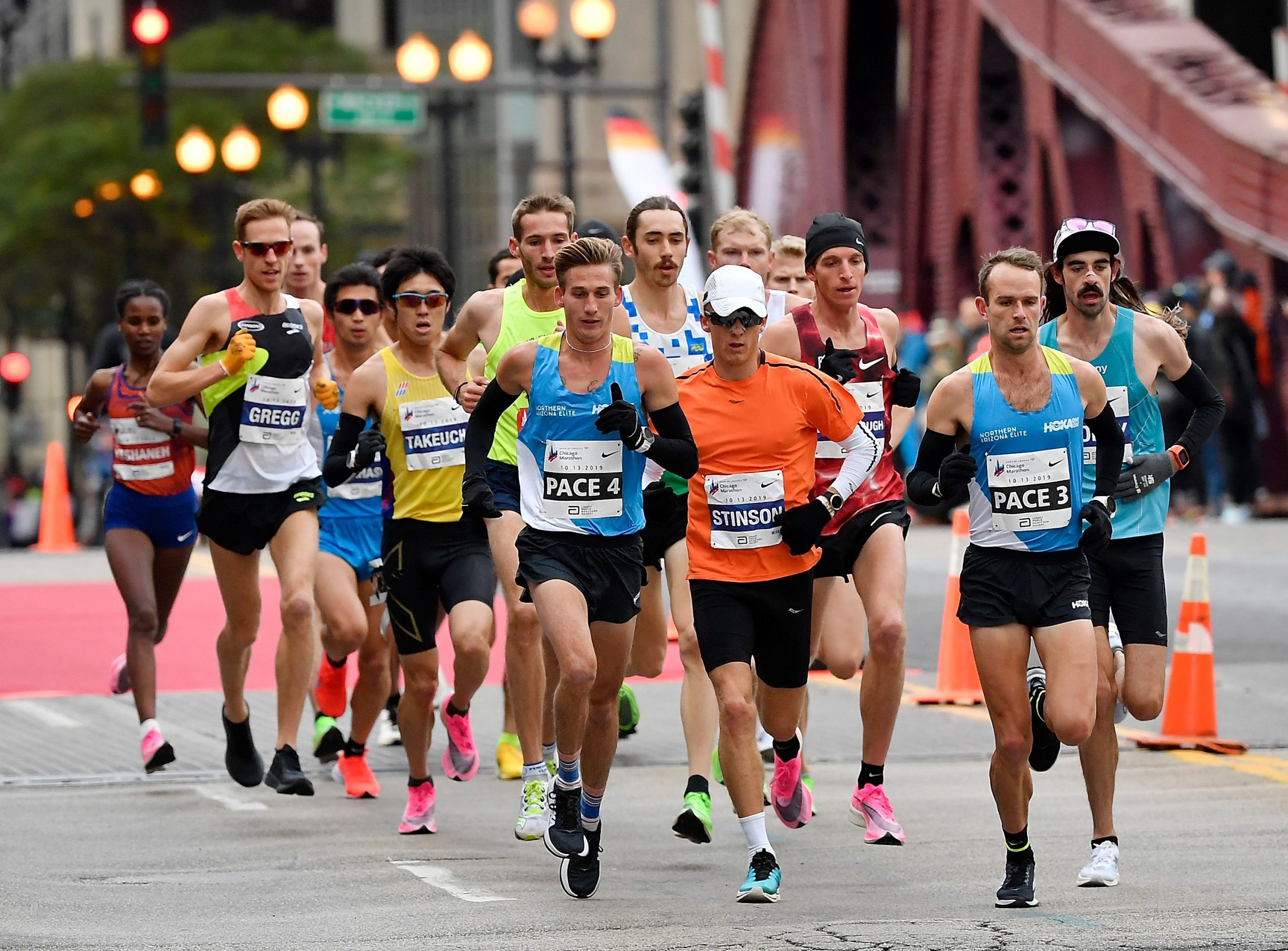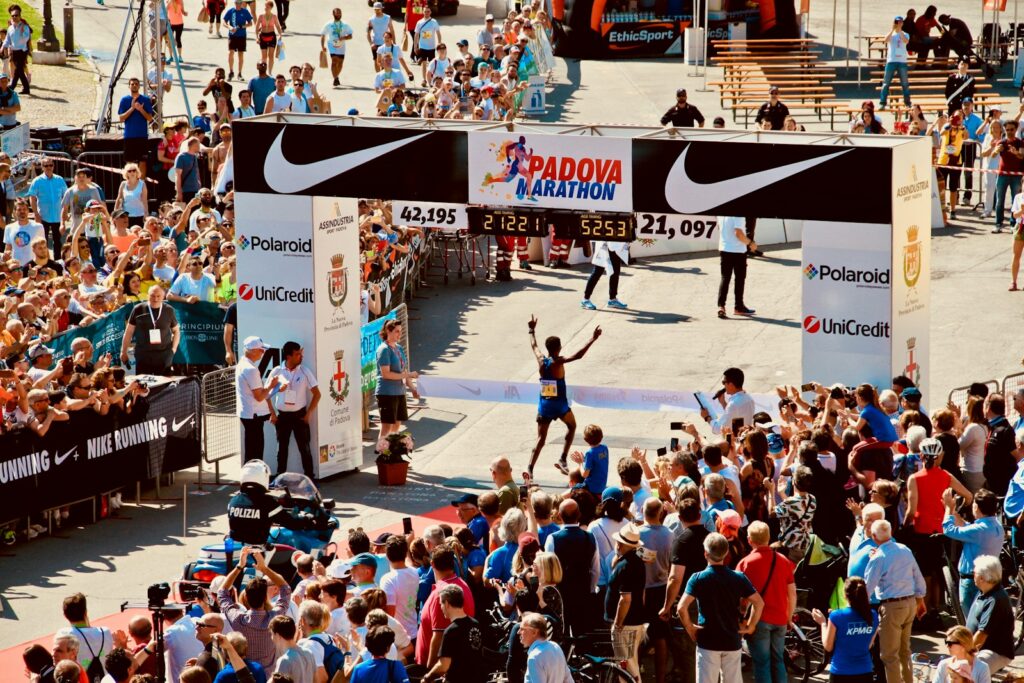
The marathon. It’s more than just a race; it’s a profound journey of endurance, a true test of physical and mental limits stretching across 42.195 kilometers. For anyone who has ever laced up their shoes for this monumental undertaking, the sheer physical exertion is undeniable, pushing the body to its absolute brink. Yet, beyond the relentless pounding of the pavement and the burning in the muscles, there lies a deeper, often more challenging, frontier: the mind.
Indeed, seasoned runners know that the battle against the distance is often won or lost not in the legs, but in the head. It’s a mental game, a continuous dialogue between the desire to push forward and the instinct to give in when discomfort morphs into outright pain. The capacity to override these natural urges, to find that reservoir of mental fortitude, is what truly separates those who finish from those who falter.
Throughout the storied history of marathon running, countless individuals have faced this crucible, employing a variety of deeply ingrained mental strategies to navigate the agony and achieve the extraordinary. These aren’t just fleeting motivational phrases; they are profound mindsets, ingrained philosophies, and acts of sheer willpower that have allowed runners, from ancient messengers to modern record-breakers, to push through unimaginable pain and redefine the limits of human endurance. Let’s explore some of these enduring mental ‘tricks’ that have shaped the marathon narrative.

1. **The Legend of Utter Commitment: Pheidippides’ Unwavering Resolve**The very genesis of the marathon as a concept is steeped in an unparalleled act of mental and physical commitment. The name ‘Marathon’ itself stems from the legend of Pheidippides, the Greek messenger whose story has resonated through millennia. It’s a tale of singular, almost desperate, resolve that set the precedent for future generations of runners.
According to the legend recounted in Plutarch’s ‘On the Glory of Athens,’ Pheidippides, after witnessing a Persian vessel altering its course towards Athens, perceived it as a last-ditch attempt to claim a false victory or raid the city. This urgent threat ignited an immediate and absolute commitment within him to warn his countrymen. His mission became everything, eclipsing any thought of personal comfort or survival.
He reportedly ran the entire distance from Marathon to Athens without stopping, driven by a solitary, overriding purpose. The account states he even discarded his weapons and clothes to reduce weight, a symbolic act of stripping away all but the bare essentials for his monumental task. This relentless, single-minded focus on the goal, to the exclusion of all else, is the ultimate mental trick: an all-consuming commitment that leaves no room for doubt or self-pity.
Bursting into the assembly with the triumphant cry, “we have won!” before collapsing and dying, Pheidippides embodied the ultimate sacrifice born of unwavering dedication. While the historical veracity of the legend is debated, its emotional power and the mental blueprint it provides—an absolute, unshakeable commitment to a singular objective—remain a powerful inspiration for any runner facing the wall. It teaches that when the ‘why’ is strong enough, the ‘how’ finds a way, even if it demands everything.

2. **Historical Resilience: The Athenian Army’s Swift Return**Beyond the individual legend of Pheidippides, the context of the Greco-Persian Wars provides another powerful example of collective mental fortitude. The Athenian army itself demonstrated an incredible capacity to push through pain and exhaustion, driven by a deep sense of duty and shared survival. This historical event, though not a race, illustrates a communal mental trick for enduring extreme duress.
Following their grueling battle and victory at Marathon, the Athenian army faced an immediate and terrifying threat: the possibility of a Persian naval raid against an undefended Athens. Despite having just endured a physically brutal conflict, there was no time for rest or recovery. The city, their homes, and their families were at stake, creating an urgent, collective imperative to act.
The historian Herodotus relates that the main part of the Athenian army, having fought and won the battle, marched quickly back from Marathon to Athens, arriving the same day. This was not a leisurely trek; it was a rapid, forced march undertaken by soldiers already at their physical limit. Their mental trick was a shared sense of purpose and an acute awareness of the consequences of failure. It was the resilience of a collective, drawing strength from each other and from the profound necessity of their mission.
This demonstration of immediate, post-combat endurance highlights the power of external motivation and collective responsibility to override individual pain and fatigue. For modern marathoners, this can translate into drawing strength from training partners, a running community, or even the abstract goal of finishing for a cause bigger than oneself. The Athenians’ rapid return underscores that sometimes, the mental trick is found in the weight of shared purpose, pushing individuals to achieve what might otherwise seem impossible alone.

3. **Breaking Barriers with Grit: The Pioneering Women of Marathon Running**For a significant period after the modern Olympic marathon began, long-distance races for women were non-existent in official capacities. Yet, the unyielding spirit of female runners led them to defy conventions, demonstrating a powerful mental trick of sheer grit and refusal to be sidelined. Their stories are a testament to pushing through not just physical pain, but the pain of exclusion and prejudice.
Even in 1896, when the first modern Olympics were held, Stamata Revithi ran the marathon distance, albeit unofficially. She was followed by others like Marie-Louise Ledru, credited as the first woman to complete a marathon in 1918, and Violet Piercy, the first woman to be officially timed in a marathon in 1926. These women, often running against the rules or without official recognition, embodied a profound mental toughness.
Their true mental trick was a steadfast belief in their own capability, coupled with an indomitable will to participate and prove their place, regardless of the institutional barriers. Arlene Pieper, who became the first woman to officially finish a marathon in the United States in 1959, and Kathrine Switzer, who ran the Boston Marathon “officially” (with a number) in 1967 through an “oversight”—and was famously accosted for it—showcased this raw determination. Bobbi Gibb, who ran Boston unofficially the year before Switzer, and was later recognized, further exemplifies this pioneering spirit.
Their actions weren’t just about running; they were declarations. The mental fortitude required to train, compete, and face public or official scorn, all while enduring the physical demands of the marathon, is immense. It’s a mental trick of self-belief so strong that it shatters external limitations and paves the way for future generations, inspiring countless others to push through their own personal and societal walls. These women’s perseverance ultimately led to the official inclusion of the women’s marathon at the 1984 Summer Olympics, a testament to their unbreakable spirit.

4. **The Power of Longevity: Sustained Dedication Over Decades**The marathon isn’t just a challenge to be conquered once; for many, it becomes a lifelong pursuit, demonstrating a mental trick rooted in sustained passion and disciplined consistency. The ability to return to the starting line, year after year, decade after decade, showcases an enduring mental resilience that defies the natural aging process.
Consider the legendary Johnny Kelley, a true fixture at the Boston Marathon. He won the race in both 1935 and 1945, but his legacy extends far beyond those victories. Between 1934 and 1950, Kelley finished in the top five an astonishing 15 times. His commitment to the event was so profound that he recorded 61 starts and 58 finishes in Boston, a record that still stands today, competing into his 80s. His mental trick was a deep, abiding love for the sport and the challenge, translating into an incredible capacity for consistent effort over a lifetime.
Other inspiring examples of longevity include Fauja Singh, who, at the documented age of 100, finished the Toronto Waterfront Marathon in 8:11:05.9, becoming the first centenarian to officially complete the distance. Though his birth certificate was unavailable, his participation alone is a testament to extraordinary will. Gladys Burrill completed the Honolulu Marathon at 92, and Harriette Thompson completed the Rock ‘n’ Roll San Diego Marathon at 92 years and 65 days, becoming the oldest woman to complete a marathon.
British-Canadian Ed Whitlock further exemplifies this mental trick, becoming the oldest to complete a marathon in under 3 hours at age 74, and under 4 hours at age 85. These athletes demonstrate that the mind can truly empower the body to continue performing at incredible levels well into advanced age. Their mental trick is a combination of discipline, an unshakeable connection to their identity as runners, and perhaps a refusal to let age define their capabilities. It’s about adapting, persisting, and finding ongoing motivation in the enduring challenge of the marathon.
Read more about: Beyond the Court: Unpacking the ‘Simple Tricks’ That Fuel LeBron James’s Enduring Peak Physicality at 40

5. **Conquering Geographic Challenges: The 50 States and Seven Continents Quest**For some marathoners, pushing through pain extends beyond a single race to an ambitious, multi-faceted quest to conquer geographical boundaries. This specific brand of mental trick involves setting an audacious, long-term goal that requires immense planning, perseverance, and the ability to maintain motivation across diverse terrains and logistical hurdles. It transforms running a marathon into a grand expedition.
Over 350 individuals have successfully completed a marathon in each of the 50 states of the United States, plus Washington, D.C., with some achieving this feat as many as eight times. This isn’t merely about running; it’s about sustained dedication, strategic travel, and the mental fortitude to restart the cycle of training and racing repeatedly, often in unfamiliar environments. It’s a trick that marries the thrill of travel with the challenge of endurance.
Two remarkable young women, Beverly Paquin and Morgan Cummings, both 22 years old in 2010, became the youngest women to complete a marathon in all 50 states and D.C. Their achievement highlights not just physical prowess but a singular focus and dedication to a monumental, multi-stage objective early in their running careers. This type of goal-setting requires incredible mental stamina to overcome the inevitable plateaus and setbacks that occur over such an extended period.
Expanding this ambition globally, 27 people have run a marathon on each of the seven continents, and 31 have run one in each of the Canadian provinces. These accomplishments are the embodiment of a mental trick where the runner’s vision transcends the individual race, turning a series of marathons into a grand, overarching project. It’s a drive fueled by an exploratory spirit and an unwavering commitment to seeing a massive, daunting goal through to its completion, no matter the difficulty or the distance.
6. **Defying Physical Limitations: Running Against the Odds**Perhaps the most profound demonstration of mental fortitude in marathon running comes from those who overcome severe physical disabilities or chronic illnesses to complete these grueling races. Their stories highlight a mental trick that transforms insurmountable obstacles into achievable challenges, redefining the very meaning of pushing through pain. It’s a testament to the human spirit’s capacity for adaptation and resilience.
Chuck Bryant of Miami, Florida, stands out as an inspiring example. Having lost his right leg below the knee, he became the first amputee to complete a marathon in each of the US states in 2004. Bryant has since completed a remarkable total of 59 marathons on his prosthesis. His mental trick is a fierce refusal to be defined by his physical limitation. Instead, he channeled his energy into adapting, finding new ways to move, and demonstrating that the drive to run can transcend physical form.
Equally compelling is the story of Patrick Finney of Grapevine, Texas. Diagnosed with multiple sclerosis, Finney was left unable to walk in 2004. However, through sheer will and “extensive rehabilitation therapy and new medications,” he managed to regain his ability to balance, walk, and eventually run. On September 25, 2011, he became the first person with multiple sclerosis to finish a marathon in each state of the United States.
Finney’s mental trick is the unwavering determination to reclaim his physical capabilities against a degenerative disease. It’s a mindset fueled by an unwillingness “to endure a life of infirmity,” driving him through the often excruciating process of rehabilitation and continuous effort. Both Bryant and Finney exemplify how the human mind, when absolutely resolved, can find paths around or through physical barriers, turning what seems impossible into an incredible reality. Their journeys are powerful reminders that pain can be a motivator, and limitations can be challenged with an unyielding spirit.

7. **Conquering the Globe: The Seven Continents Challenge**The previous section touched upon the ambition of runners who tackle all 50 states or seven continents, but some individuals push this geographical quest to an entirely new level, intertwining it with incredible personal battles. Imagine completing seven marathons on seven continents in just seven days—a feat that transcends mere physical endurance to become a profound statement of mental will against overwhelming odds. This isn’t just about covering distance; it’s about navigating extreme climates, brutal logistics, and the relentless ticking clock of travel and recovery.
One such extraordinary individual is the British adventurer Sir Ranulph Fiennes. In 2003, he undertook the “7 on 7” challenge, a grueling endeavor to run seven marathons on seven continents over seven consecutive days. What makes his accomplishment a truly astounding display of mental fortitude is that he completed this monumental task despite having suffered a major heart attack and undergoing a double heart bypass operation just four months prior. His mind, unyielding in its resolve, drove his body through recovery and then through one of the most demanding athletic challenges imaginable.
Fiennes’s ability to not only recover from such a significant health crisis but then to immediately pivot to a global, high-intensity challenge speaks volumes about his mental toughness. It illustrates a mental trick of profound resilience and an unshakeable belief in the body’s capacity to adapt and perform, even when faced with extreme medical setbacks. The sheer discipline required for recovery, combined with the vision and determination to execute such an ambitious goal, serves as a potent reminder that the mind can often overcome what the body, on its own, might deem impossible.
This incredible standard was later eclipsed by Irish ultramarathon runner Richard Donovan. In 2009, Donovan completed seven marathons on seven continents in under 132 hours, or five and a half days, shaving significant time off the previous benchmark. Not content with this, he further improved his own record, completing the 7 on 7 in under 120 hours – less than five days – starting on February 1, 2012. Donovan’s repeated success highlights a mental trick of relentless self-improvement and an insatiable desire to push the boundaries of what is humanly possible, constantly seeking to redefine the limits of endurance, speed, and logistical mastery.

8. **The Century Club and Beyond: Larry Macon and Sy Mah’s Unwavering Pursuit**For many runners, completing a marathon is a once-in-a-lifetime achievement. For a select few, however, it becomes a lifelong obsession, a continuous pursuit of accumulation that showcases an astonishing degree of mental commitment. These individuals don’t just finish marathons; they live and breathe them, pushing their bodies and minds through hundreds, even thousands, of races, demonstrating a mental trick of unparalleled consistency and passion.
Larry Macon, for instance, set a Guinness World Record for Most Marathons Run in a Year by Man, completing an incredible 238 marathons in 2013 alone. This isn’t merely about physical stamina; it requires an almost superhuman mental discipline to maintain motivation, manage logistics, and recover repeatedly over such an intense period. Macon celebrated his 1,000th career marathon at the Cowtown Marathon in Ft. Worth in February 2013, a milestone that speaks to a sustained, decades-long dedication to the sport that few can comprehend.
His mental approach is a masterclass in breaking down an immense goal into manageable, albeit frequent, challenges. Each starting line represents a renewed commitment, a fresh mental battle against the distance. The ability to continually recommit, to find enjoyment and purpose in the repetitive act of marathon running, is a powerful mental trick. It transforms what might seem like a monotonous task into a continuous journey of self-discovery and resilience, fueled by an inner drive to see how far the human spirit can truly go.
This relentless pursuit of volume was pioneered by individuals like Sy Mah of Toledo, Ohio, who, before his passing in 1988, had already completed an astounding 524 marathons. Mah’s pioneering spirit laid the groundwork for the high-volume running community that exists today. His dedication demonstrated that the marathon could be a regular fixture in a runner’s life, not just an infrequent peak event, requiring a mental landscape geared towards continuous engagement and long-term goal actualization.

9. **The Ultimate Accumulators: Preisler, Hottas, and Frank’s Astounding Feats**Taking the concept of high-volume marathon running to truly staggering heights are a handful of legendary figures who have completed well over a thousand races of marathon distance or longer. Their feats redefine what’s possible for human endurance and demonstrate a mental trick rooted in sheer, unadulterated persistence, turning the act of running into a continuous, almost meditative, life practice. It’s a testament to the mind’s capacity to embrace and thrive on a challenge that most would find overwhelming.
Horst Preisler of Germany stands out as one such colossus. As of June 30, 2007, he had successfully completed 1214 marathons and an additional 347 ultramarathons, totaling an incredible 1561 events at or beyond the marathon distance. Imagine the mental landscape required to train for, complete, and recover from such a volume of races over a lifetime. It speaks to an unyielding inner drive, an almost philosophical commitment to the repetitive yet profoundly challenging act of running.
Christian Hottas is another icon in this unique echelon of endurance. He made history by becoming the first runner ever to complete 2000 marathons, celebrating this monumental achievement at the TUI Marathon Hannover on May 5, 2013, surrounded by over 80 friends from 11 countries. Not content with this, Hottas pushed even further, completing his 2500th marathon on December 4, 2016. His journey highlights a mental trick not only of individual persistence but also of finding motivation and support within a global community, transforming personal goals into shared celebrations of endurance.
Norm Frank of the United States is also credited with an astonishing 945 marathons, further underscoring this rare mental capacity for sustained effort. These runners don’t just endure pain; they find a way to integrate it, manage it, and ultimately transcend it, race after race, year after year. Their collective achievements demonstrate that the ‘mental trick’ isn’t always about a single strategy, but often about an overarching life philosophy that prioritizes continuous challenge and unwavering dedication.
10. **Speed and Volume Combined: Steve Edwards’ 500-Marathon Record**While many runners focus on either speed or sheer volume, a rare few manage to combine both in a way that sets new benchmarks for mental and physical discipline. Steve Edwards, a distinguished member of the 100 Marathon Club, is one such individual whose achievements showcase a mental trick centered on maintaining exceptional performance standards over an astonishing number of races. This isn’t just about finishing; it’s about finishing strong, every single time.
Edwards set a world record for running 500 marathons in the fastest average finish time of 3 hours 15 minutes. This incredible feat was accomplished on November 11, 2012, at Milton Keynes, England, where he also became the first man to run 500 marathons with an official time below 3 hours 30 minutes. To achieve such consistent speed across 500 marathons, over a period of 24 years, speaks to a meticulous approach to training, recovery, and race strategy—all underpinned by an unshakeable mental resolve.
At 49 years old when he achieved this record, Edwards demonstrated that age doesn’t have to be a barrier to peak performance or a high volume of racing. His mental trick lies in an unwavering commitment to excellence, a refusal to compromise on either the quantity or quality of his runs. It’s about a deep understanding of his own body and mind, coupled with the discipline to push both to their optimal limits, time and time again. This requires a profound level of focus and a sustained belief in one’s capacity for continued improvement and achievement.
His journey offers a powerful lesson: the mental game isn’t just about pushing through a single instance of pain, but about cultivating a mindset that can sustain high-level performance and dedication over decades. It’s a testament to the idea that consistent, quality effort, fueled by mental fortitude, can lead to truly legendary accomplishments in the world of marathon running. Edwards’s record is a beacon for those who aspire to achieve both great speed and immense mileage.

11. **The Streak Runners: Daily and Consecutive Marathon Feats**Perhaps the most intense demonstration of mental resilience comes from those runners who tackle marathons not just frequently, but consecutively, day after day. This extraordinary form of endurance running pushes the limits of recovery, pain tolerance, and sheer mental grit, revealing a profound capacity for relentless self-challenge. It transforms the marathon from a periodic event into a continuous, all-encompassing way of life.
Stefaan Engels, a Belgian runner, embarked on an astonishing quest to run the marathon distance every day of the year. While he faced a foot injury near the end of January 2010, forcing a temporary resort to a handcycle, his mental fortitude shone through. By February 5th, fully recovered, he decided to reset his counter and successfully completed 365 marathon distances in as many days by February 5, 2011, breaking the previous record for consecutive marathons. This comeback, this refusal to let a setback derail his ultimate goal, is a powerful mental trick in itself.
Ricardo Abad Martínez from Spain took this concept to an even greater extreme. In 2009, he ran 150 marathons in 150 consecutive days, an incredible feat of daily endurance. Not stopping there, he then completed an astounding 500 marathons in a row, from October 2010 to February 2012. Imagine the mental grind of waking up every single day, knowing another marathon awaits, and finding the will to push through the accumulated fatigue, muscle soreness, and mental fatigue. This level of sustained effort demands a mental trick that transcends typical motivational strategies.
In 2024, Hilde Dosogne, a 55-year-old Belgian woman, set a new record for women by running a marathon every single day of the year, completing her 366th marathon on December 31st. Her journey encompassed 15,445 kilometers, saw her wear out 22 pairs of shoes, and included 15 falls—yet she persisted. Her achievement is a vivid illustration of the mind’s power to maintain focus and drive despite daily physical demands and the inevitable challenges and minor injuries that arise from such an undertaking. It is an unyielding commitment to a self-imposed challenge.

12. **Age is Just a Number: The Enduring Spirit of Our Oldest Marathoners**Finally, the marathon community continually reminds us that the human spirit, when coupled with an indomitable will, can defy conventional notions of aging. The mental trick here is a powerful refusal to let a birthdate dictate one’s capabilities, proving that dedication, passion, and the love of running can extend well into advanced years, inspiring generations with their longevity and resilience.
Fauja Singh, a British citizen, captured worldwide attention by finishing the Toronto Waterfront Marathon in 2011 at the documented age of 100, with a time of 8:11:05.9. Although his age couldn’t be officially verified due to the lack of a birth certificate from rural Colonial India, the sheer audacity of undertaking and completing a marathon at such an advanced age represents an extraordinary mental triumph. His participation alone, the commitment to training and toeing the line, embodies a belief that the finish line is always within reach, regardless of the calendar.
American women have also set incredible records in this category. Gladys Burrill, at 92 years and 19 days old, completed the 2010 Honolulu Marathon in 9 hours 53 minutes. Just a few years later, in 2015, Harriette Thompson of Charlotte, North Carolina, eclipsed this, completing the Rock ‘n’ Roll San Diego Marathon at 92 years and 65 days old, with a time of 7 hours 24 minutes 36 seconds. These women exemplify a mental trick of sustained vitality, demonstrating that the joy and challenge of running are not limited by decades, but rather amplified by the wisdom and experience of a long life.
And we cannot discuss longevity without mentioning British-Canadian Ed Whitlock, who redefined age-group running by becoming the oldest person to complete a marathon in under 3 hours at age 74, and later, under 4 hours at age 85. Whitlock’s achievements speak to a mental trick of meticulous self-discipline and an uncanny ability to maintain high levels of fitness and competitive drive well beyond what is typically expected. His performances are a testament to how a focused mind can empower the body to defy the natural effects of aging, setting an inspiring example for runners of all generations.
From the legendary origins of Pheidippides to the centenarians crossing finish lines, the marathon has always been, at its core, a mental battle. The remarkable athletes we’ve explored, whether overcoming ancient threats, societal barriers, physical limitations, or simply the relentless march of time, share a common thread: an extraordinary mental fortitude. They teach us that the true ‘simple mental trick’ is not a single technique, but a profound wellspring of belief, resilience, and unwavering commitment that resides within each of us, waiting to be tapped. So, as you lace up your shoes for your next run, remember these incredible stories, and know that your mind is your most powerful ally in pushing through any pain, real or perceived, on the road ahead.





